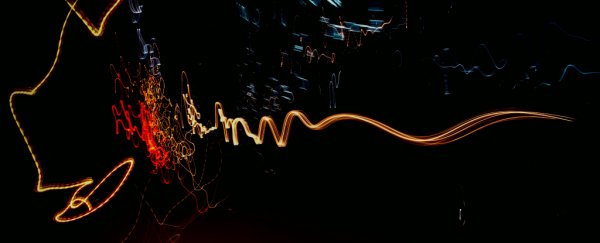Physicists have just found a way to slow light down without touching or intercepting it, simply by making it 'twist' as it moves through space.
That means they were able to make beams of light take longer to get from point A to point B, a skill that will be incredibly useful when it comes to controlling the next-generation of optical computers and telecommunication systems.
But before you freak out, this research doesn't change the fact that light is still travelling at, well, the speed of light.
The laws of physics state that light travels at a constant speed in a vacuum, wherever it is in the Universe. For those playing along at home, that speed is 299,792,458 m/s. And we haven't broken the laws of physics just yet.
This constant speed of light is simply referred to as 'c' in equations (like Einstein's famous E = mc2), and as Myles Gough reported for us last year: "It's a fundamental constant in physics: it defines the absolute speed limit for the transfer of energy, matter, and information."
Of course, you might also be aware that we can already made light travel a lot slower than that - for example, when it moves through water, or any other medium with a greater refractive index than a vacuum, light's speed drops off significantly.
That's great, but those techniques don't help us slow down light while still accurately transmitting information - something we're doing more and more of over optical fibres. So in recent years, physicists have been looking into more subtle ways of slowing light down.
Last year, a team led by the University of Glasgow in Scotland took the first step and successfully managed to slow light down in a vacuum. They did this by sending photons through a 'mask', which altered the physical form the photons and slowed down their journey.
And now a team from the University of Philippines' National Institute of Physics has taken things even further and demonstrated a new way that light can be 'slowed down', simply by changing the way it twists around itself.
In their experiment, the physicists used beams of light called Laguerre-Gauss (LG) beams, which are known to carry orbital angular momentum, or OAM.
OAM is a type of angular momentum, which is a quantity that measures how much light is rotating. If you picture a beam of light twisting like a corkscrew through space, you'll get a rough idea of what's going on.
Each beam of light has its own unique OAM, but the team was able to show that they could change the angular momentum of their LG beams without directly interfering with them, and demonstrated that this slowed the light down.
Importantly, the team was able to calculate and predict the amount of time that each LG beam would be slowed down prior to the experiments, based on their OAM.
As we mentioned before, this doesn't mean they actually changed the speed of light - they simply altered its path so it took a longer time to get where it's going. But the potential applications are just as exciting.
LG beams are already used in telecommunication systems, and early computer applications. So if the team can now predict how these beams will slow down - or even control the rate at which they travel - it will allow them to manipulate the flow of information, and hopefully make these systems more efficient.
It's still early days, but this research is part of a growing body of work that shows light isn't quite as well understood as we once thought. In fact, a few weeks ago, physicists discovered a brand new form of light, and earlier this year, a team discovered a fundamental new property of the electromagnetic radiation.
Importantly, all of this suggests that maybe light speed isn't quite so constant after all. In fact, it might be more like a maximum limit for light travelling through a vacuum. And if that's the case, then maybe we're also not that far off finding a way to travel faster than the speed of light - if we haven't already.
The research has been published in Scientific Reports.
